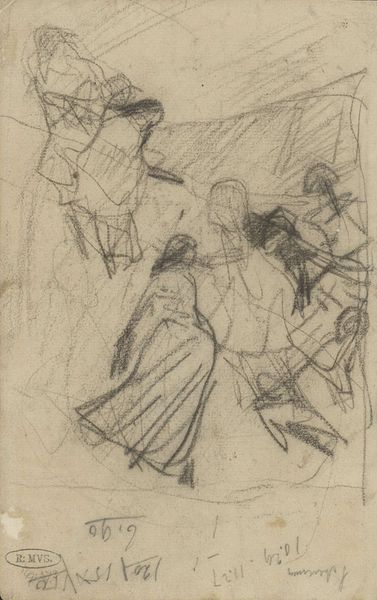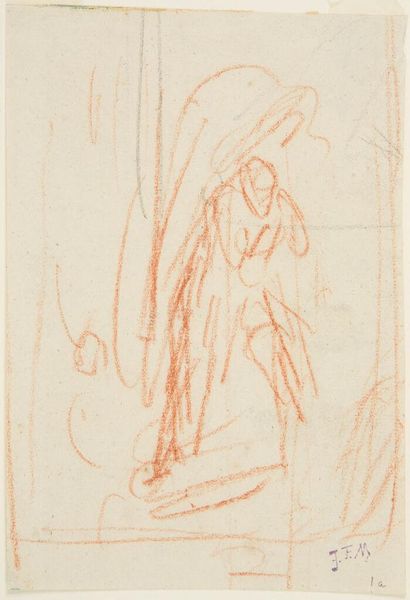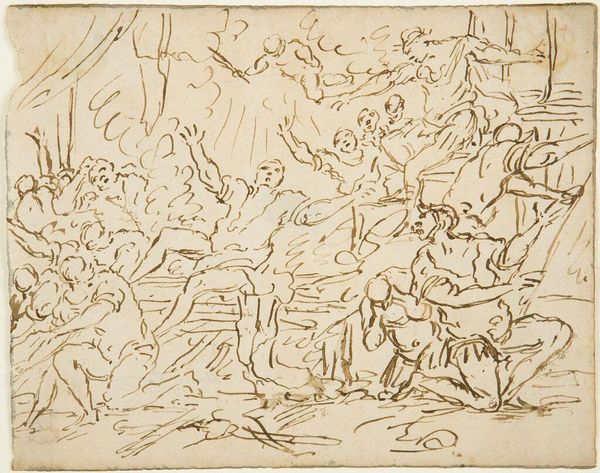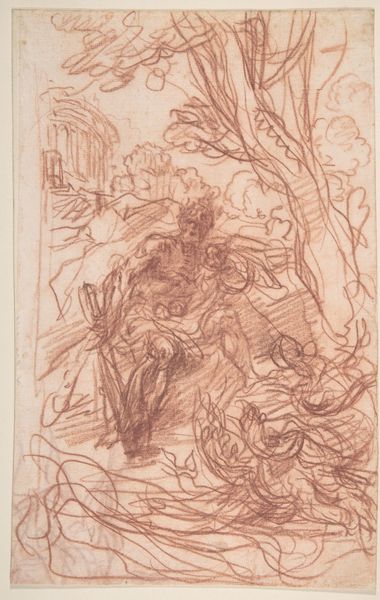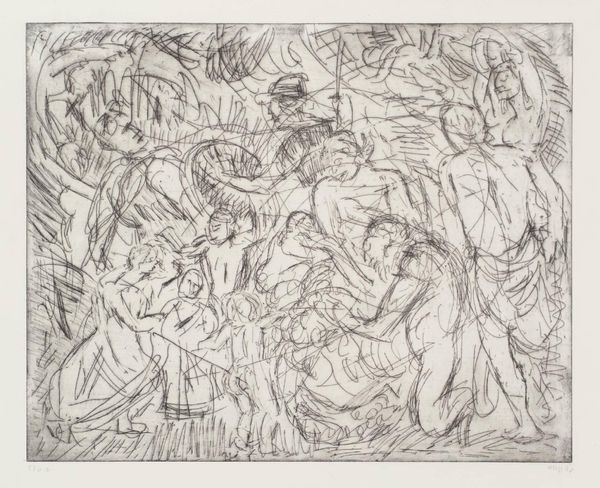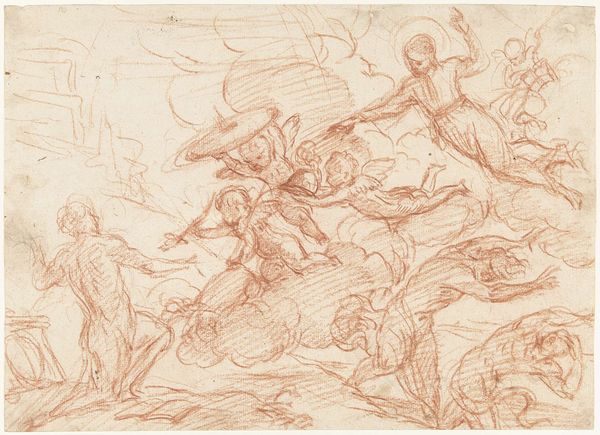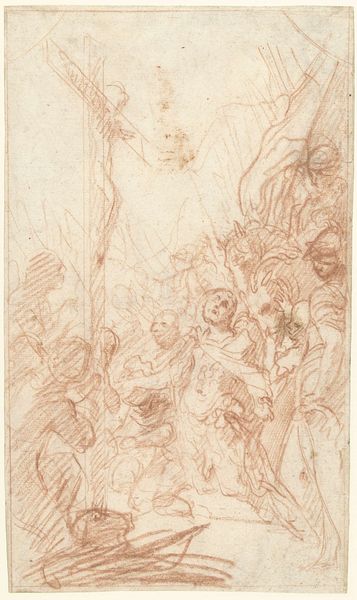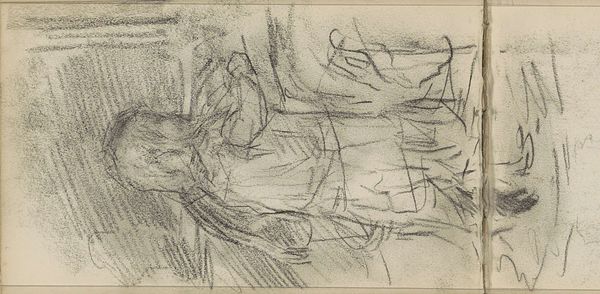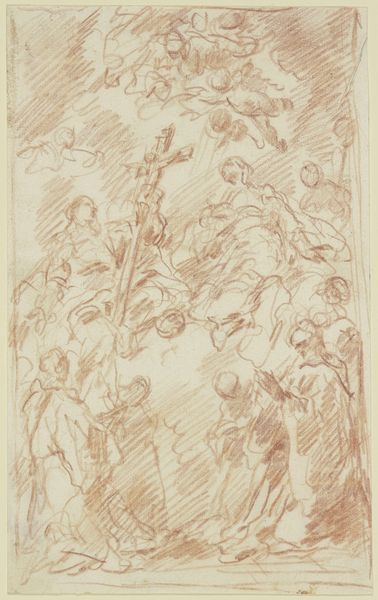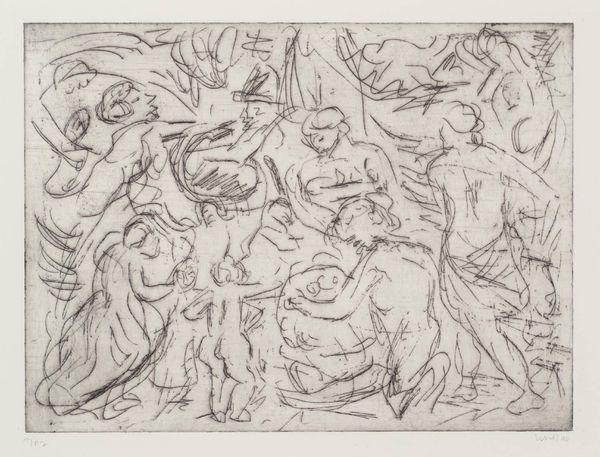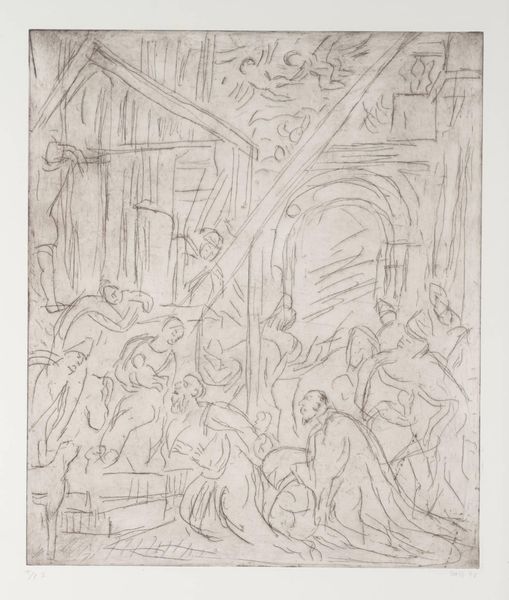
drawing, paper, chalk
#
drawing
#
baroque
#
paper
#
chalk
#
water
#
genre-painting
#
history-painting
#
nude
Dimensions: 227 × 138 mm
Copyright: Public Domain
Curator: Simone Cantarini's “Nymphs Bathing,” created sometime between 1642 and 1648, is a red chalk drawing on paper, currently held at the Art Institute of Chicago. Editor: It's lovely. A little chaotic at first glance, but there's a palpable sense of life and energy. Curator: I'm particularly drawn to the composition itself. Notice how Cantarini uses the red chalk to create dynamic, swirling lines that define the figures and suggest movement. The composition guides our eye, emphasizing the interplay of light and shadow across the figures' forms. Editor: The depiction of nude nymphs immediately makes me think of historical power dynamics. Who is allowed to represent the nude form, and whose bodies are omitted from these artistic traditions? How does the male gaze come into play when assessing such an image? Curator: The very looseness you pointed out might be relevant here. I think Cantarini masterfully uses line quality. He balances delicate strokes with heavier, more defined contours, thus achieving depth and volume while still retaining an airy, sketch-like quality. Look at the nymph in the foreground – her pose seems natural yet subtly idealized. Editor: Right, because of course, these historical depictions, like the "natural yet subtly idealized" female body, often obscure lived reality behind a smokescreen of imposed societal ideals. Do you see any subversive messaging? Or is it rather about Cantarini perpetuating—perhaps even reveling in—the male gaze? Curator: I don't know if subversive messaging would be appropriate here, but consider this: this is likely a study for a larger painting. So, in viewing this drawing, we get to witness the artist's creative process, the genesis of a more complete artwork. This level of intimate detail invites closer study of how Cantarini constructed ideal forms. Editor: And it gives us space to reflect on who benefits from these constructions. Examining these images requires constant contextual interrogation. Art exists in the cultural here and now, despite the time period depicted or its creation date. Curator: An important reminder indeed. The formal analysis, though vital, isn’t sufficient to encompass a work's full complexity. Editor: Exactly! These pieces ask the audience questions, consciously or unconsciously.
Comments
No comments
Be the first to comment and join the conversation on the ultimate creative platform.
